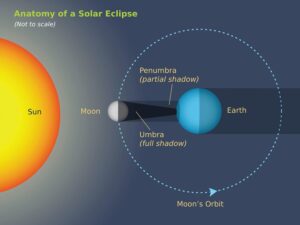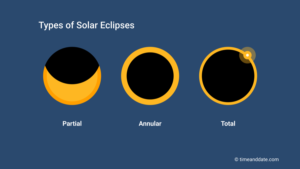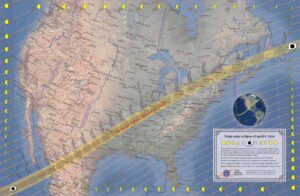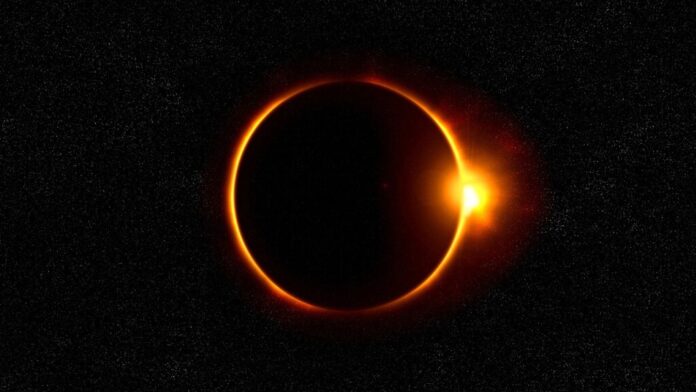On Monday, April 8, a rare astronomical eclipse will occur above Jesuit where the path of the moon will cross between the Sun and the Earth. The moon’s shadow which is 115 miles wide will cross Mexico in a northeast diagonal from Texas to Maine and then darken Southern Canada. Dallas will be directly in the path which will bring four minutes of darkness and long lasting memories on the campus for all Jesuit Rangers.
Eclipses involving the sun happen every year; this past Homecoming on October 14, Dallas witnessed an annular solar eclipse which created a social media frenzy of posts with crescent-shaped shadows all around. However, a total solar eclipse is much more of an astronomical rarity with the last one, occurring in North America on August 21, 2017.
Solar Eclipses Explained
Solar eclipses are an astronomical phenomena, usually occurring a couple times a year in limited areas and of different types. They occur when the path of the Moon in the new moon phase crosses between the Sun and the Earth. When this happens, the Sun’s rays are partially or almost fully blocked by the Moon.

There are four types of solar eclipses:
Partial Solar Eclipse – The Moon only covers part of the Sun’s rays and shape, causing a crescent-shaped Sun to be seen. The Moon’s penumbra (lighter shadow) is cast onto the Earth. This would also be a total solar eclipse in areas where the Moon’s umbra (darker shadow) but not penumbra is cast onto Earth.
Annular Solar Eclipse – The Moon’s path does not fall to where it appears big enough to cover the full shape of the Sun. This creates a “ring of fire” around the Moon when observed.
Total Solar Eclipse – This is the classic solar eclipse where the Moon covers the full shape of the Sun and the Moon’s umbra is cast onto Earth in areas of totality. This would also be a partial solar eclipse in areas where the Moon’s penumbra but not umbra is cast onto Earth.
Hybrid Solar Eclipse – These eclipses happen when the eclipse turns from an annular to total eclipse during the course of the Moon’s path, or vice versa from a total to annular eclipse.

This Year’s Eclipse
On April 8, the total eclipse over Dallas will begin at 12:23 p.m. and for the next hour and 17 minutes will remain this way. The Moon will move closer into the Sun’s shadow until 1:40 p.m. then, the Moon will fully cover the shape of the Sun and cast a total eclipse over Dallas. This totality will cause the sky to change from a daytime brightness to the dark of night very quickly and will only last four minutes. After 1:44 p.m., the eclipse will become partial again until 3:02 p.m. when the Moon will fully move out of the shadow of the Sun.

Safety When Viewing the Eclipse
Viewing the bright part of the sun through a camera, binoculars or a telescope without a special purpose solar filter will instantly cause severe eye injury. Except when the moon covers the sun completely during totality, it is not safe to look directly at the sun without special eclipse glasses or filters approved by the American Astronomical Society. The only time during an eclipse when one can look directly at the eclipse without experiencing eye damage is during totality when the sky turns dark and the solar corona appears. However, one should put their glasses back on when this time period ends to avoid harm.

According to Texas weather forecast sites, chances of clear skies are high on April 8. Stay tuned to Ranger Net for updates on how Jesuit plans to observe the eclipse.
Tune into The Roundup for more daily news and updates!
Credits
https://science.nasa.gov/eclipses/future-eclipses/eclipse-2024/where-when/
https://eclipse.gsfc.nasa.gov/SEdecade/SEdecade2021.html
https://www.timeanddate.com/eclipse/solar-eclipse.html
https://eclipse.aas.org/resources
https://www.greatamericaneclipse.com/april-8-2024/






